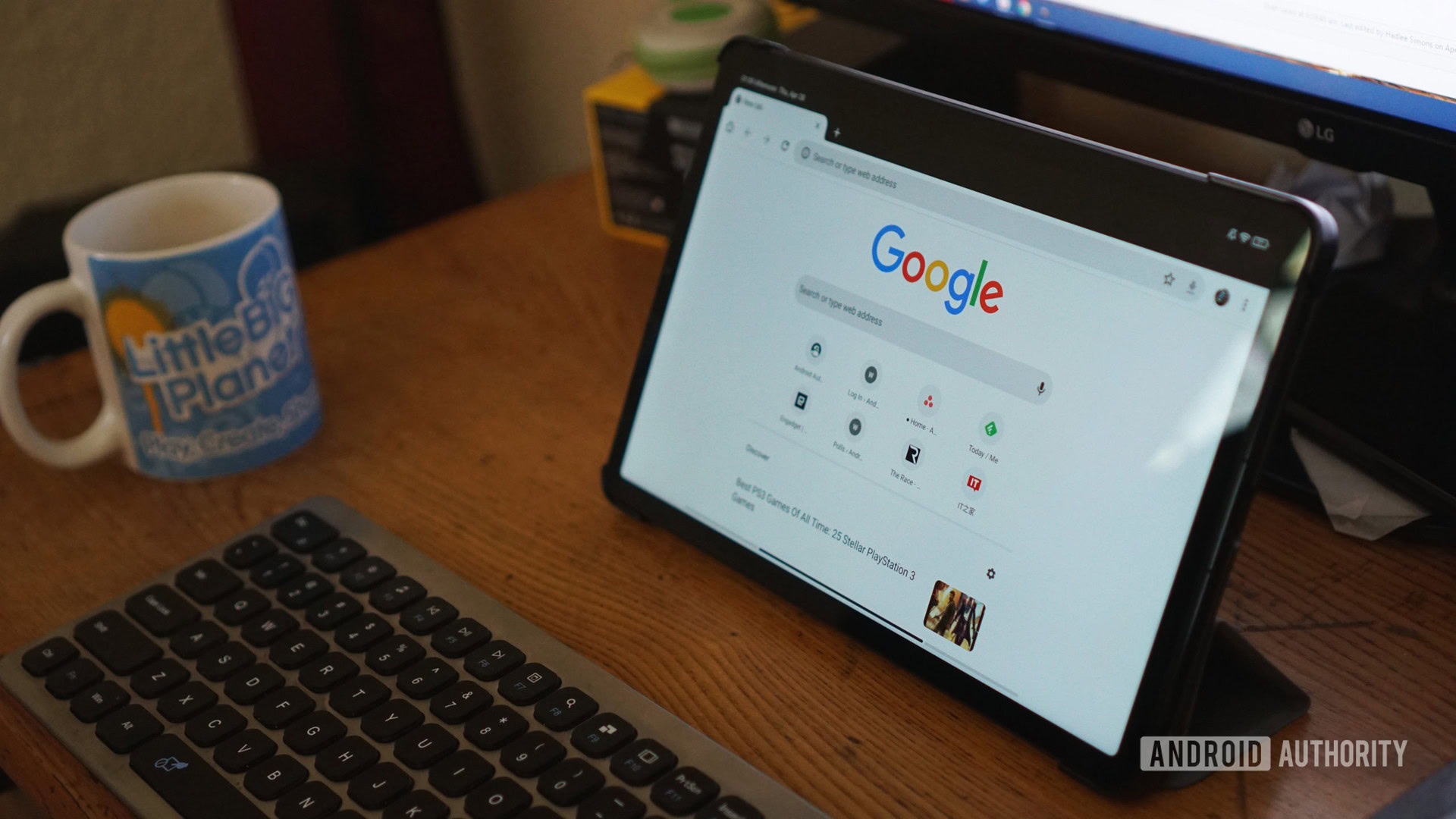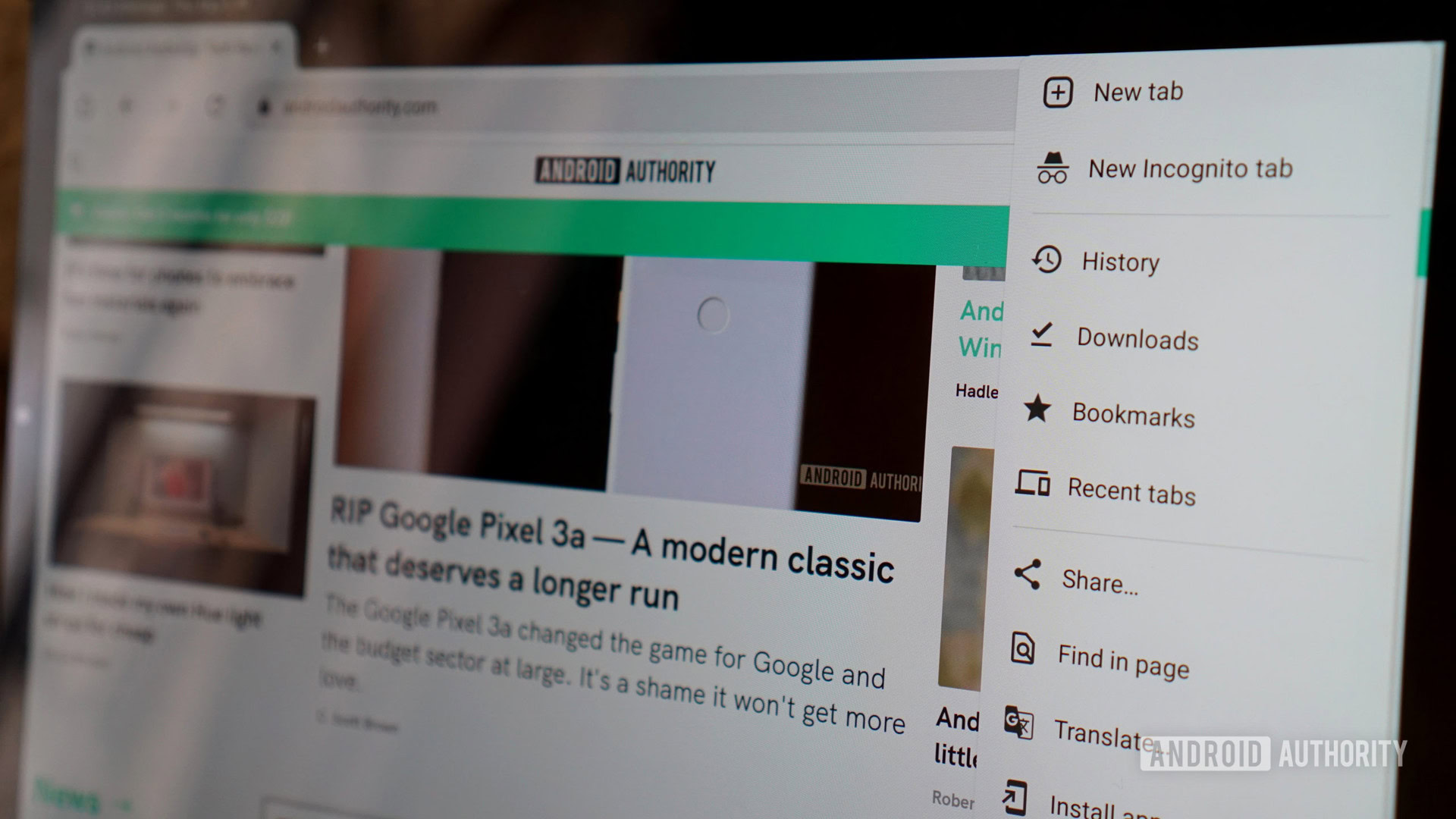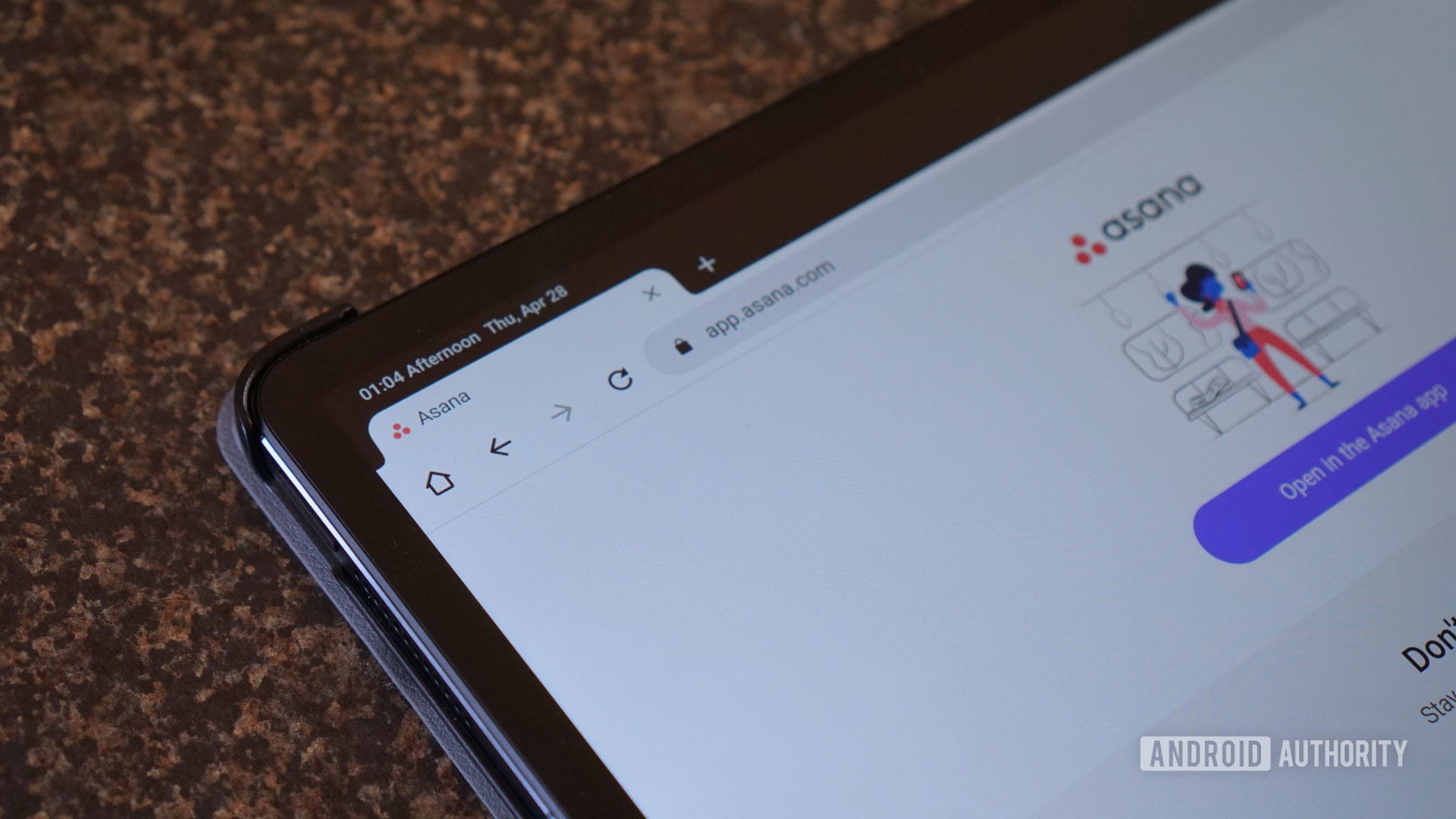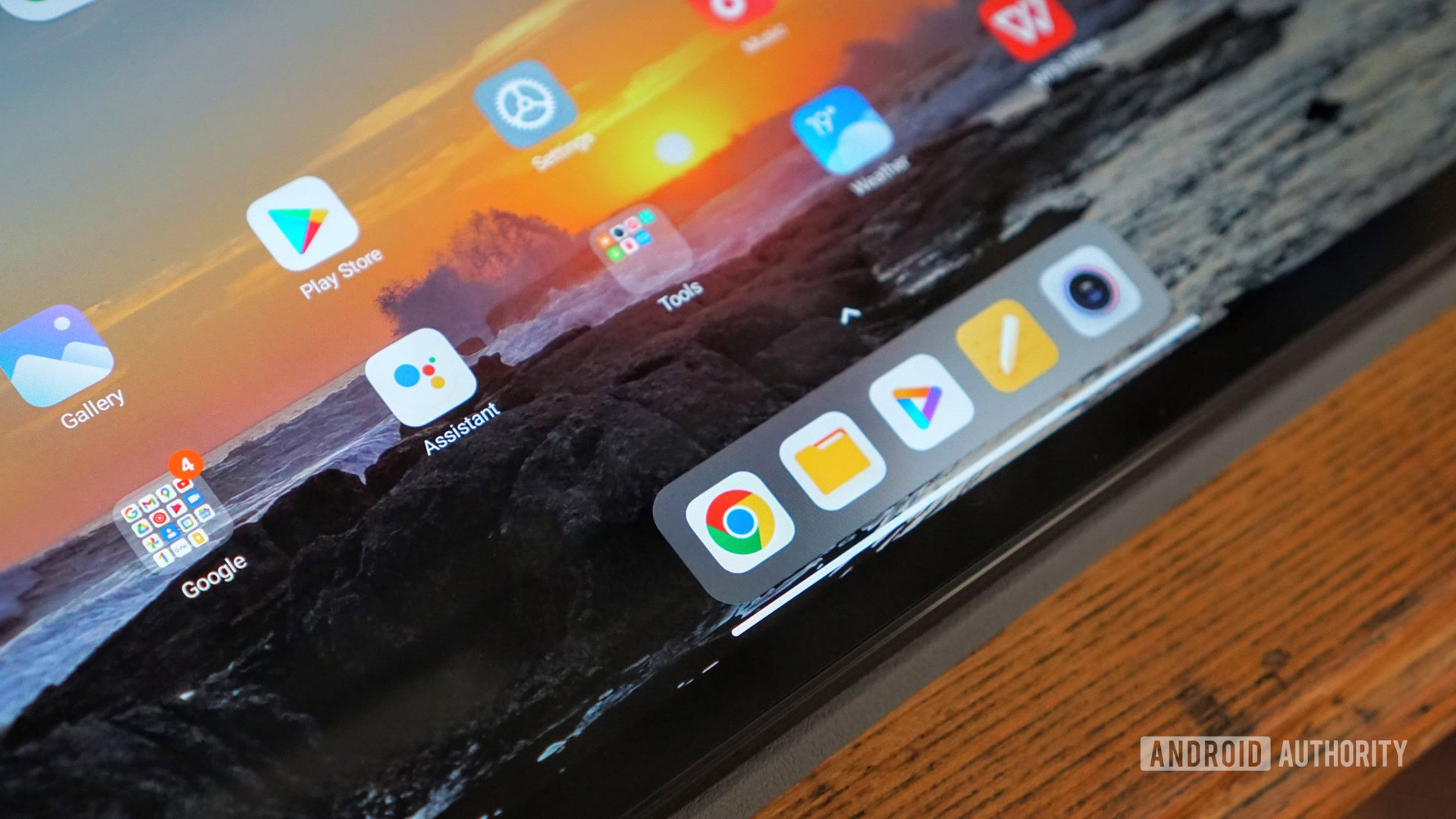Affiliate links on Android Authority may earn us a commission. Learn more.
Android tablets are exciting again, but Chrome hasn't kept up
Published onMay 7, 2022

Android tablets have seen a revival of sorts during the pandemic, as the work-from-home trend and at-home learning drove the need for affordable productivity devices. Between Samsung’s Galaxy Tab series, the realme Pad line, the Xiaomi Pad 5, and the Nokia T20, consumers have quite a few slates to choose from today.
You could argue that hardware was never the issue with Android tablets, but Google definitely seems to be taking the problematic software seriously now. The company recently revealed Android 12L, bringing a host of tablet-focused features to the table. These additions and tweaks include an overhauled UI with large screens in mind, a taskbar, and drag-and-drop split-view multitasking.
It’s plain to see then that Google is trying to make the software experience better on Android tablets. But after using one for work over the past few months, there’s one app Google really needs to improve on tablets.
Simply put, Google needs to turn its attention to the Chrome web browser if it wants Android tablets to become more viable in the workplace.
Simple shouldn’t necessarily be basic

I bought a Xiaomi Pad 5 earlier this year as I figured it would make a solid backup work device when the power occasionally goes out. I’ve used it for work on several days this year and I quickly noticed there are quite a few areas where Chrome for Android falls short compared to the desktop version.
No extension support
Perhaps the biggest misstep is Google’s continued refusal to bring extension support to Chrome for Android. This is particularly notable in my case, as tools like affiliate link extensions and Grammarly are necessary during the workday.
Extensions are also a super handy feature for consumers in general, with offerings like ad-blockers, screenshot utilities, note-taking apps, and security/privacy tools being some of the more popular add-ons on the desktop version of Chrome. They’re not a niche feature by any measure.
We know it’s possible to have extensions on mobile because the plucky Kiwi Browser app supports them on Android. Sure, some extensions simply don’t work, but the likes of LastPass, video downloaders, Honey, and Privacy Badger are all compatible, to name a few prominent add-ons. Not bad for an upstart browser, right?
An even bigger browser supporting extensions on mobile is Safari for iOS and iPad OS. Apple brought extensions to its in-house browser with iOS 15 and iPad OS 15, offering plenty of add-ons to choose from. This is definitely one feature we’d like Google to steal from Apple on mobile.
Google seems more concerned about ad blockers on Chrome for Android than about ensuring a more user-friendly, desktop-level experience.
It really seems like Google is more concerned about people potentially installing ad-blockers on Chrome for Android and reducing one of its revenue streams than it is about ensuring a more user-friendly, desktop-level experience.
The obsession with launching native apps

Another irksome issue I’ve encountered when using Chrome for Android is that services are far too keen to send you to an app instead of letting you use a web-based alternative (I’m talking about you, Asana). After all, do you really need another app in the background on a tablet when a browser tab will do just fine?
This can be circumvented in many cases by toggling the “desktop site” setting — a feature made simpler by Chrome recently allowing you to permanently keep the option ticked. But it would be great if you could toggle it on a site-by-site basis or when the browser detects a keyboard is connected.
Google should definitely take some pointers from Apple and its iPad range here. iPad OS 13 made “desktop-class browsing” the default over two years ago, as the tablet browser effectively identifies as a MacOS browser out-of-the-box and renders websites accordingly. Furthermore, Apple’s tablets offer the ability to toggle the desktop setting on a site-by-site basis, so you can seamlessly switch between mobile and desktop views.
Custom search engines, multiple profiles, more

The Chrome for Android bugbears don’t end here. Our resident custom search engine wizard Rita El Khoury also bemoans the fact that custom search engine functionality doesn’t work on Chrome for Android. So if your workflow consists of using this time-saving feature on the desktop, you’re out of luck here.
Chrome for Android needs plenty of improvements if Android tablets are to remain in the workplace and classroom.
Other notable missing features compared to the desktop version of Chrome include tab muting and multiple profile support. The latter is particularly exasperating if you’ve got two separate Google accounts for work and personal use, with each having its own browsing history, bookmarks, passwords, and other details.
It’s a real shame to see Chrome for Android holding tablets back at this point, as we know Google’s own Chrome OS offers a more comprehensive browser experience. Features like extensions, multiple profiles, and desktop-class browsing are all the norm there.
Chrome for Android needs a desktop boost
Android tablets have clearly enjoyed an uptick in sales during the pandemic for work, education, and play. This has also been accompanied by Google focusing on delivering a better Android for tablets and large screen devices. But a better operating system for tablets doesn’t mean much if the web browser is still stuck in the past.
Platforms like Windows, iPad OS, and even Google’s own Chrome OS have all embraced a browser-first philosophy or at the very least made the browser an equal citizen. So Google will need to follow suit with Chrome on Android if it doesn’t want Android tablets to slump in the productivity market for good.